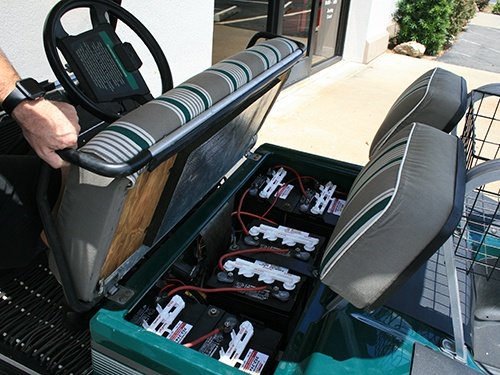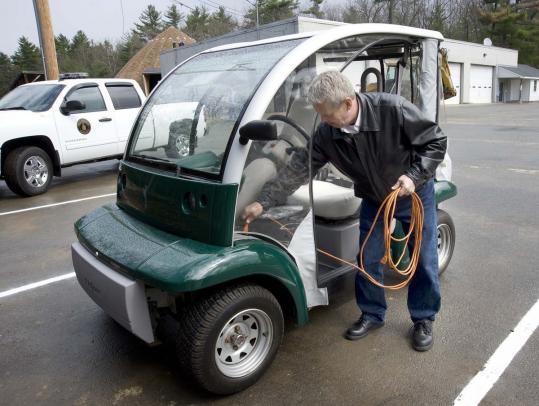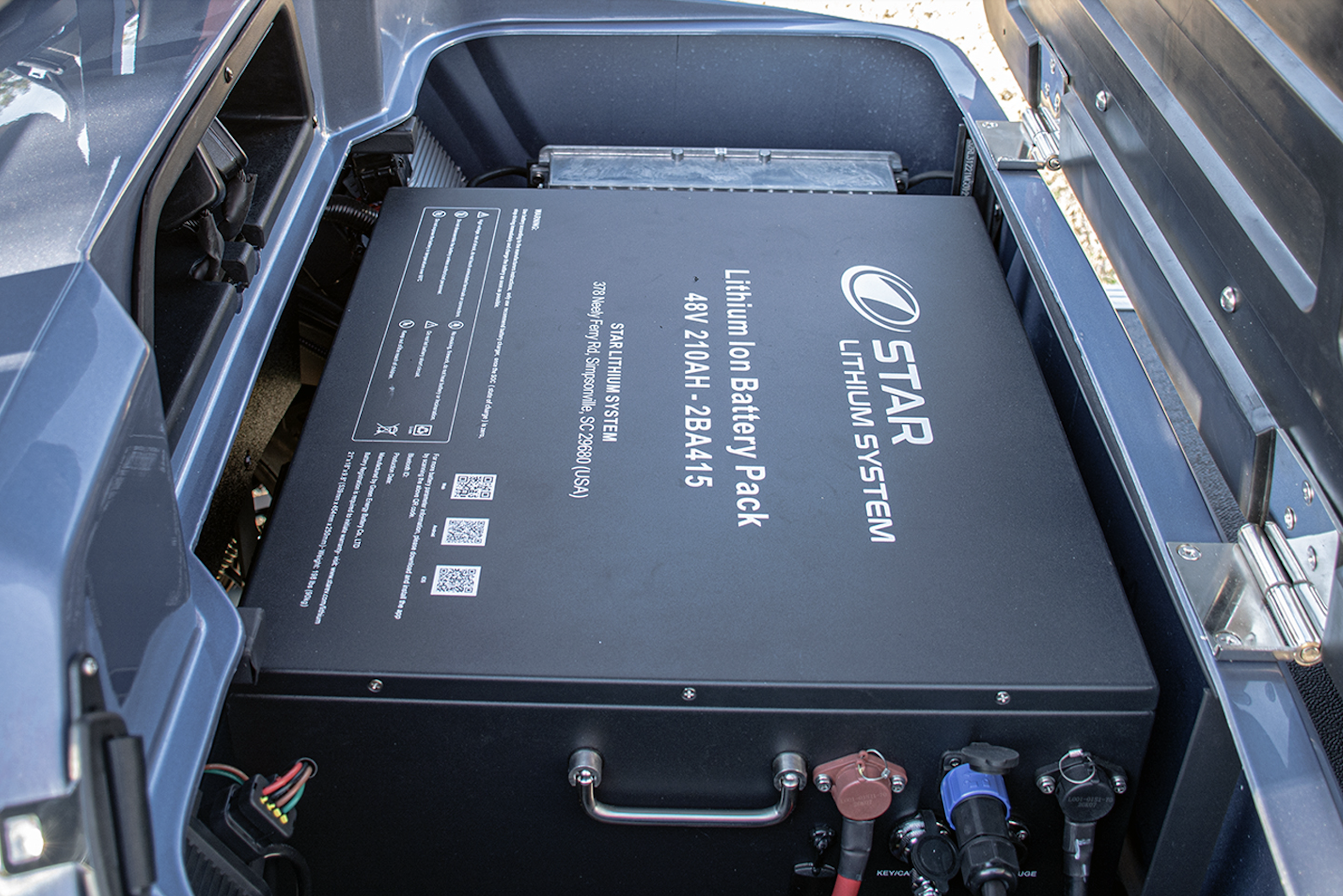If you own a golf cart, you know how important it is to keep it ready to go whenever you need it, whether for quick trips around your property or long days on the course. A lot of this reliability comes down to proper battery care, as the battery is the heart of your golf cart’s performance. One common question many golf cart owners ask is whether they should leave their golf cart plugged in all the time. It’s a valid concern because improper charging habits can shorten your battery life, and replacing batteries can get expensive. Maintaining your golf cart battery properly not only saves you money but also ensures your cart stays dependable and ready to use. Below, we’ll break down the pros, cons, and best practices to help you keep your golf cart battery in top shape for the long run.
Why Is There Confusion About Plugging in Golf Carts?
The differing recommendations from golf cart brands often confuse owners:
- Club Car recommends keeping carts plugged in for prolonged storage.
- E-Z-GO, on the other hand, advises unplugging during long-term storage.
- Yamaha suggests letting the battery run out between charges and staying unplugged.
With such conflicting advice, it’s no wonder golf cart owners feel uncertain about the best course of action. To help, we’ll examine both sides and explain the best practices for your battery’s health.
Pros of Leaving Your Golf Cart Plugged in
Leaving your golf cart plugged in can seem like the most convenient choice, but why does it work for some people? Here’s the reasoning:
- Combat Standby Loss: Batteries naturally discharge over time (standby loss), especially when unused for long periods. A plugged-in charger can prevent this.
- Prevent Deep Discharge: Allowing your battery to drain completely before recharging it can damage the battery, reducing its lifespan. Keeping it topped off ensures it’s ready to go when needed.
- Long-Term Storage Solution: During winter or prolonged periods of inactivity, your battery cells slowly lose charge. A plugged-in charger can help maintain their level, avoiding loss of performance.
Chart – How Long Can a Golf Cart Battery Go Without Charging?
Battery Type | Time Until Full Discharge (Unplugged) | Impact on Battery if Fully Drained |
|---|---|---|
Lead-Acid Battery | 2-4 months | Risk of damage and reduced lifespan |
Lithium Battery | 4-6 months | Generally handles discharge better |
Cons of Leaving Your Golf Cart Plugged in
Despite the benefits, leaving your golf cart plugged in all the time has its downsides:
- Overcharging Hazards: If your charger’s auto shut-off feature malfunctions, it could overcharge the battery. This process leads to overheating, reduced capacity, and eventual battery damage.
- Accelerated Battery Wear: A constantly charged battery may experience cell polarization, weakening its internal components and overall efficiency.
- Charger Issues: Leaving chargers plugged in continuously could cause them to degrade over time, affecting performance and charging speed.
- Tripped Circuit Breakers: Continual power flow might overload circuits, signaling that your charger’s auto shut-off system isn’t functioning properly.
Chart – Risks of Overcharging
Problem | Cause | Impact |
|---|---|---|
Overheating | Continuous power supply | Damaged plates and fluid loss |
Decreased Lifespan | Prolonged high charge levels | Permanent capacity reduction |
Charger Malfunction | Sustained operation | Inefficiency or charger breakdown |
Best Practices for Maintaining Your Golf Cart Battery
Rather than fully committing to plugging in or avoiding it altogether, a balanced approach works best. Here are some tips:
- Use a Smart Charger: Smart chargers monitor your battery’s charge and stop when full. They also maintain a “float charge,” preventing overcharging.
- Full Charge Cycles: Batteries perform better with full-charge cycles. Partial charges may lead to imbalanced cells and reduced lifespan.
- Unplug During Storage: For extended periods like the off-season, fully charge the battery, unplug it, and disconnect cables to preserve its health. Check and recharge periodically if the level drops below 50%.
- Store in a Suitable Environment: Avoid extreme hot or cold environments, as they can damage the battery cells.

Chart – Best Conditions for Battery Storage
Storage Condition | Recommended Setting |
|---|---|
Temperature | Between 50°F and 77°F |
Charge Level | Around 50%-100% |
Climate Control | Dry, well-ventilated area |
Bottom Line
Golf cart batteries are built to charge and discharge. While it’s okay to leave your cart plugged in occasionally, constantly maintaining a full charge can harm its long-term performance. The key to a healthy battery is balance. Use a smart charger when possible, complete full-cycle charges, and store your cart in proper conditions to ensure years of reliable use.
Interested in more battery tips or need help maintaining your golf cart? Contact J’s Golf Carts for expert advice and quality service. We’re always here to keep your ride running smoothly!
CONTACT US TODAY ABOUT YOUR CART NEEDS
It’s best to check your battery every couple of months and recharge it if the charge drops below 50%.
Yes, smart chargers are designed to prevent overcharging automatically, making them safe for prolonged use.
Yes, frequent short charges can lead to imbalanced cells, reducing performance and lifespan. It’s better to complete full charge cycles.
Overcharging can cause overheating, internal damage, and evaporation of the electrolyte solution, all of which reduce battery performance.
High temperatures can cause overheating, while cold environments reduce a battery's efficiency and ability to hold a charge.



